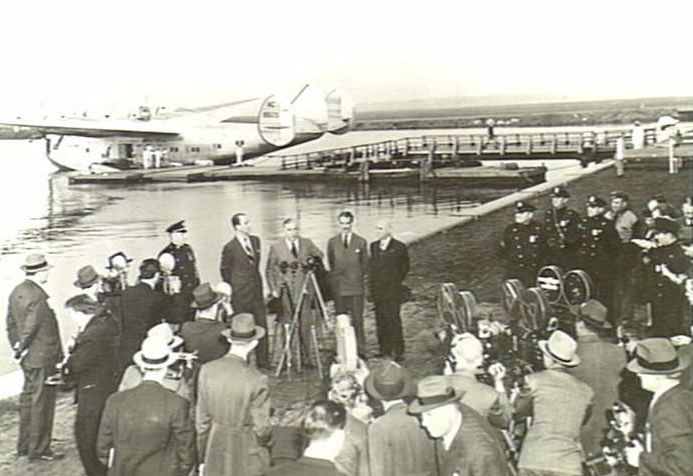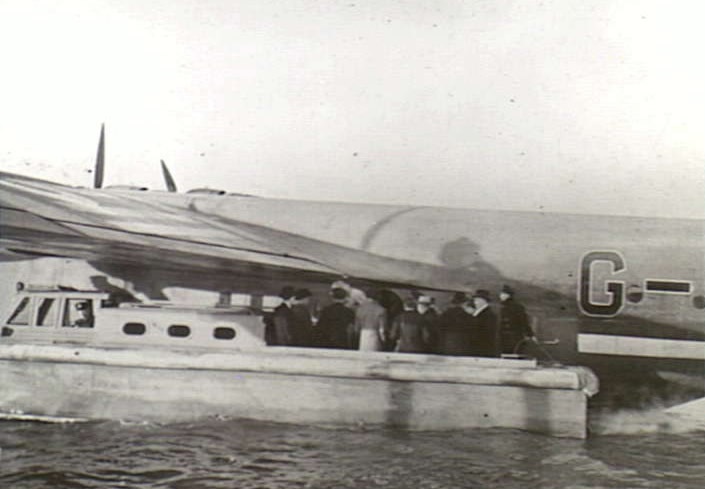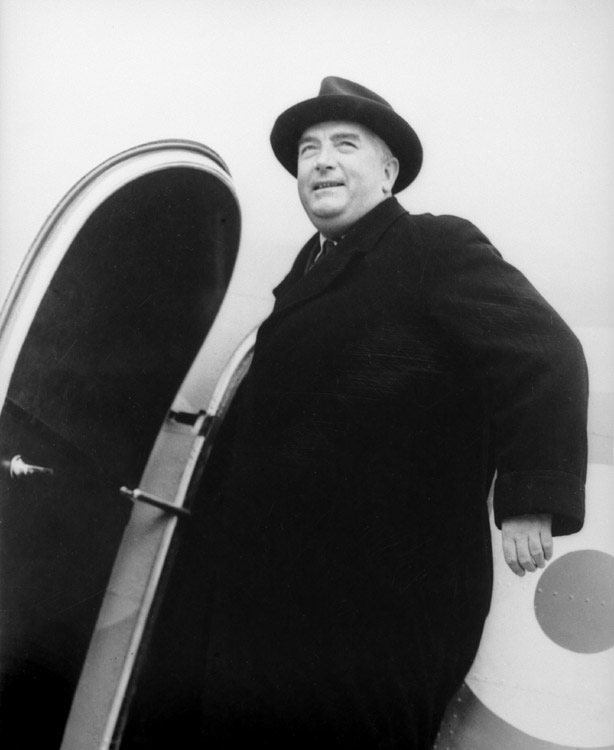24 January
Sydney, AustraliaLeave Sydney. Qantas Empire Flying Boat CORINNA 1 Capt. R.S. Adair. The aircraft so streamlined that looked at from the rear it looks positively herring-gutted, but from inside it is most roomy—comfortable seats in which you may snooze not only post-prandially but all day.
Chief feature in the air—press the button and the steward arrives with the drinks—the Company’s compliments in our case. Shedden 2 and I, each of whom had dived into his pockets for cash, smile with genuine Scottish pleasure.



